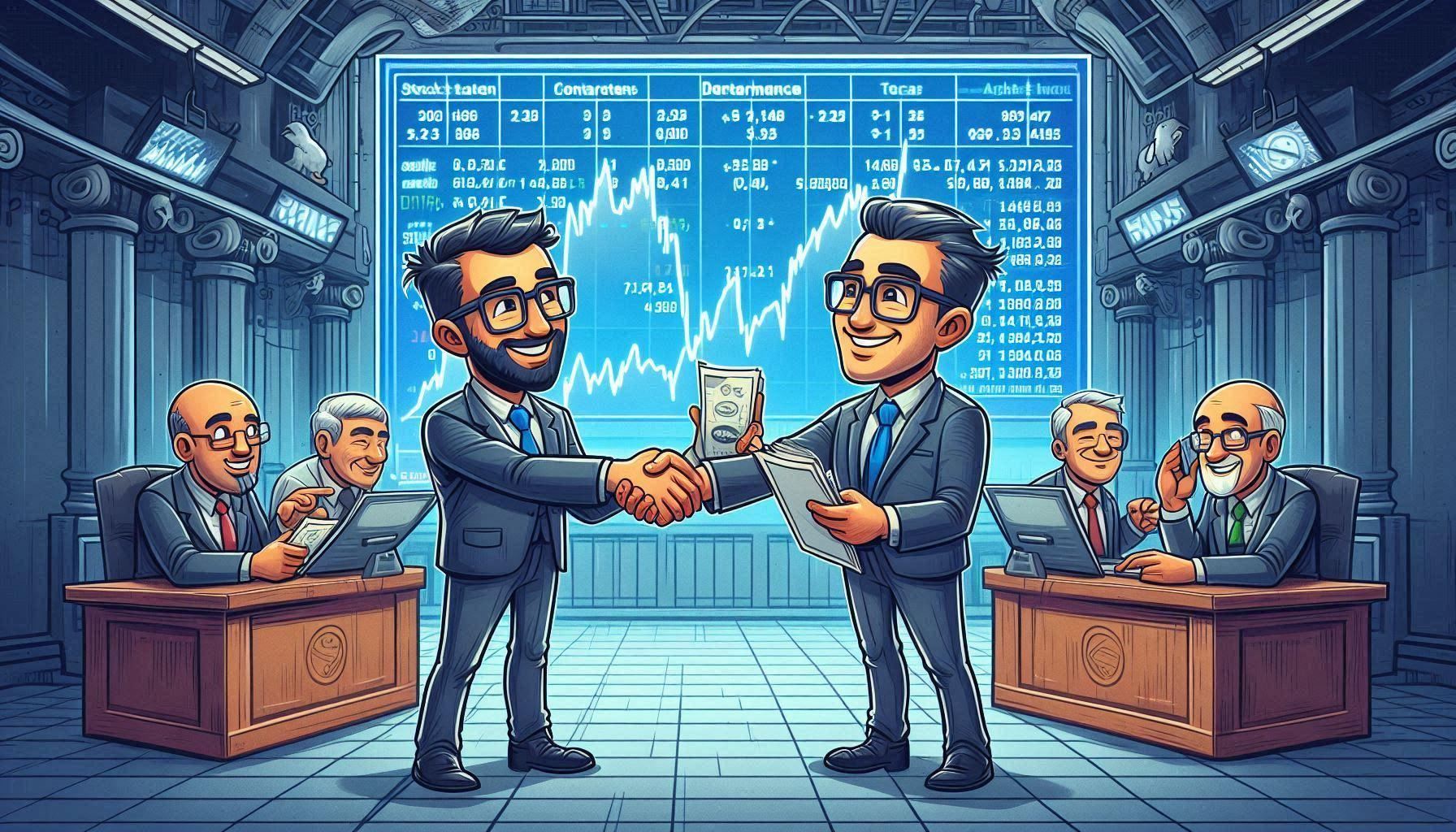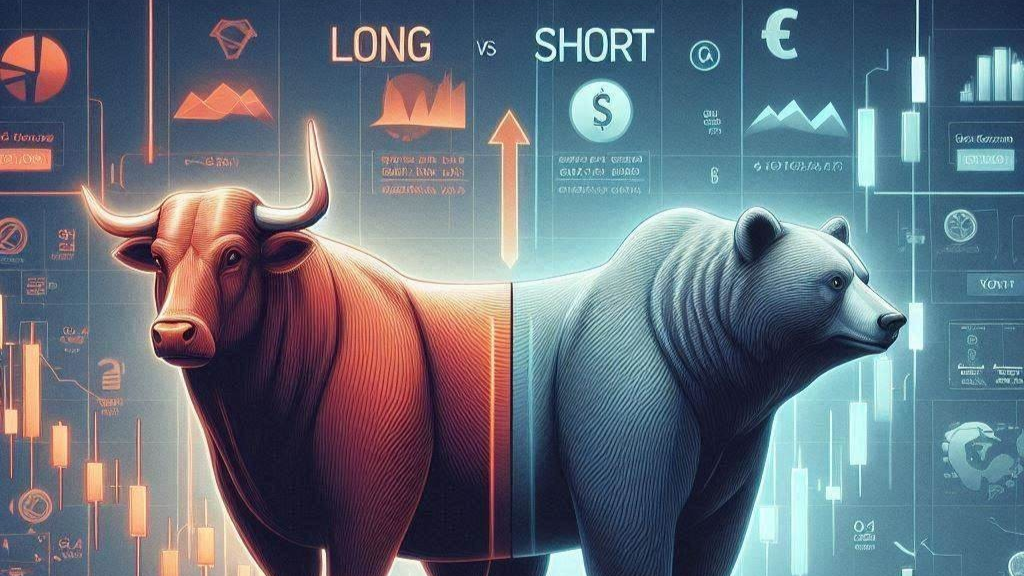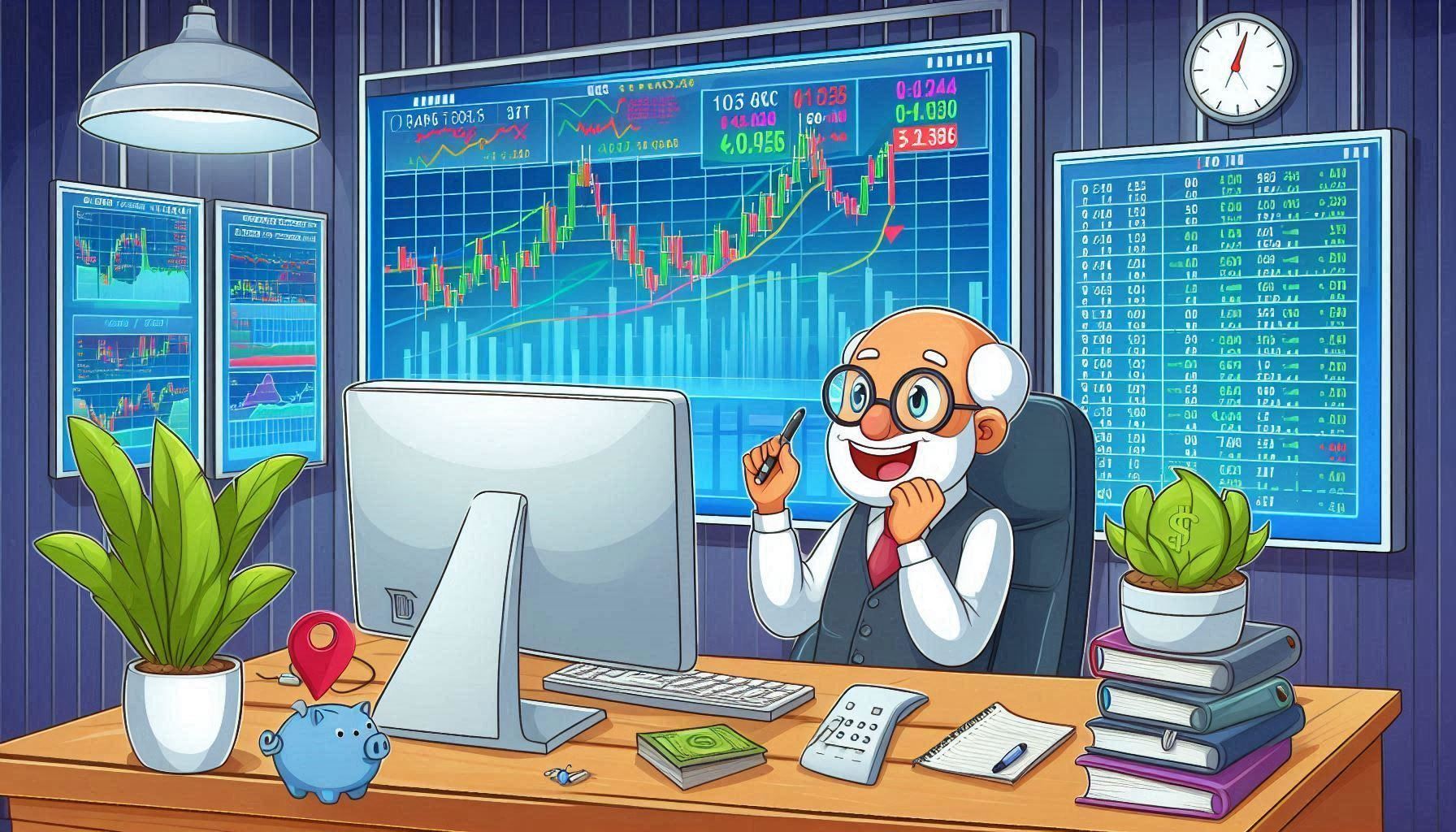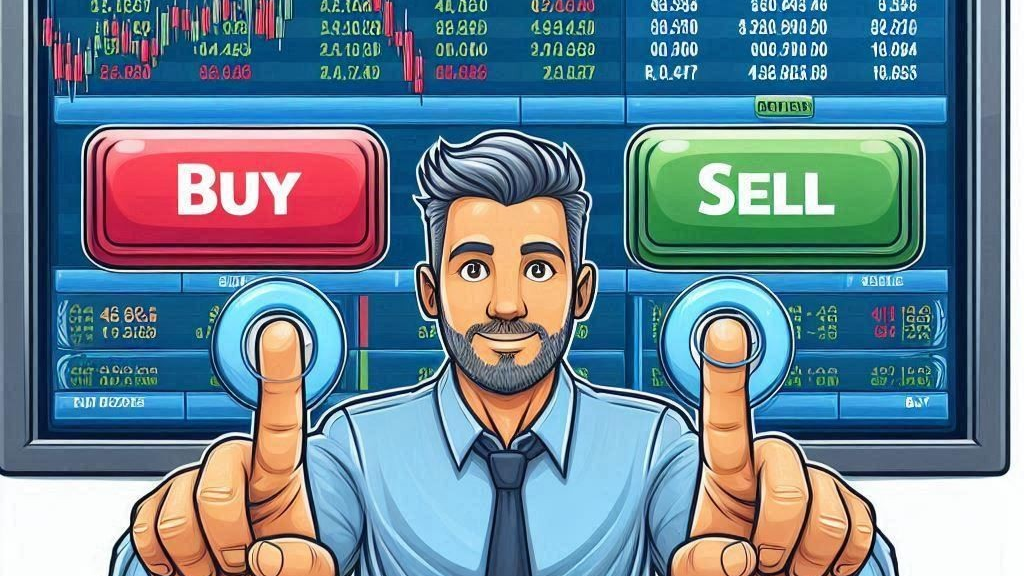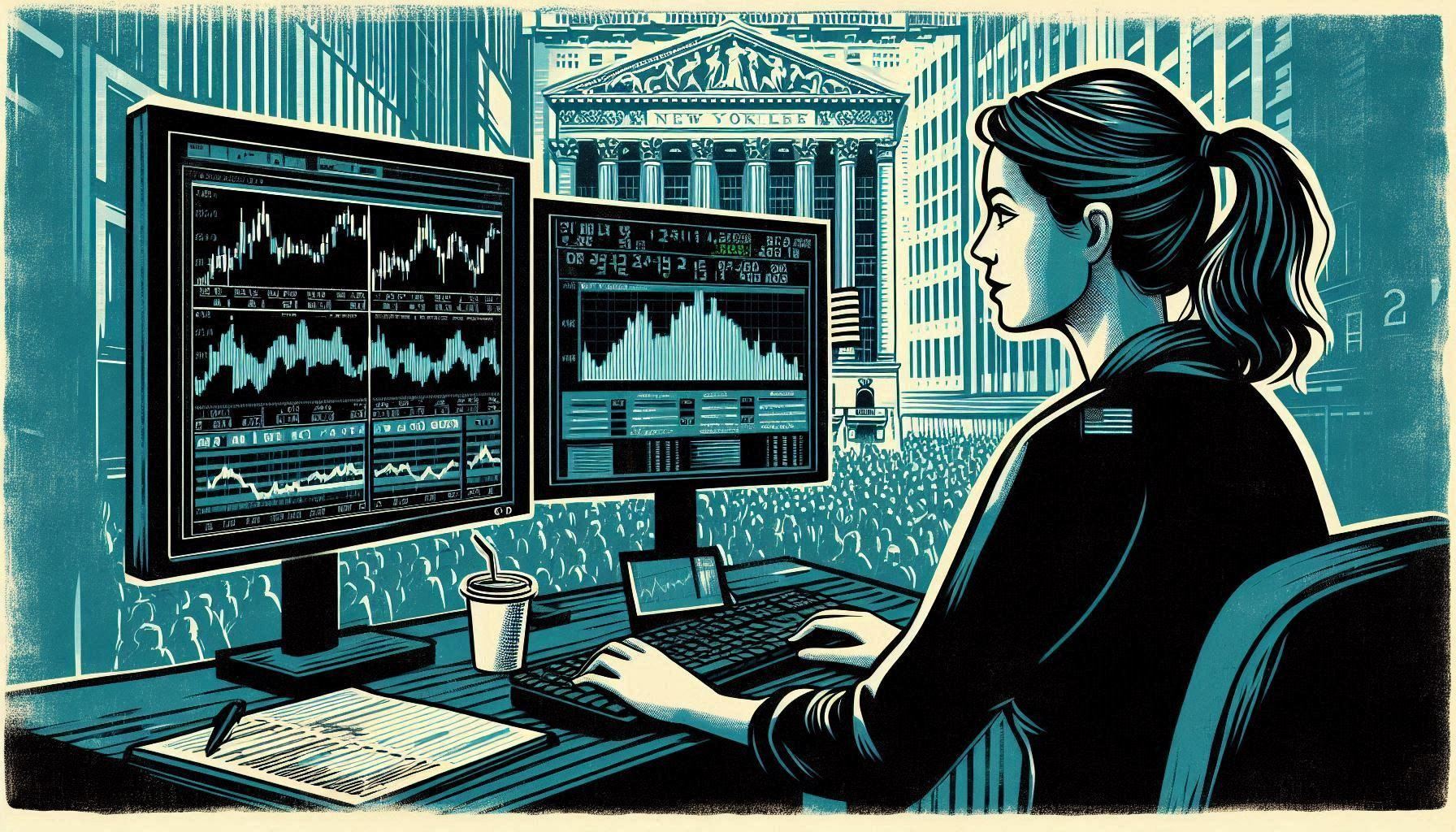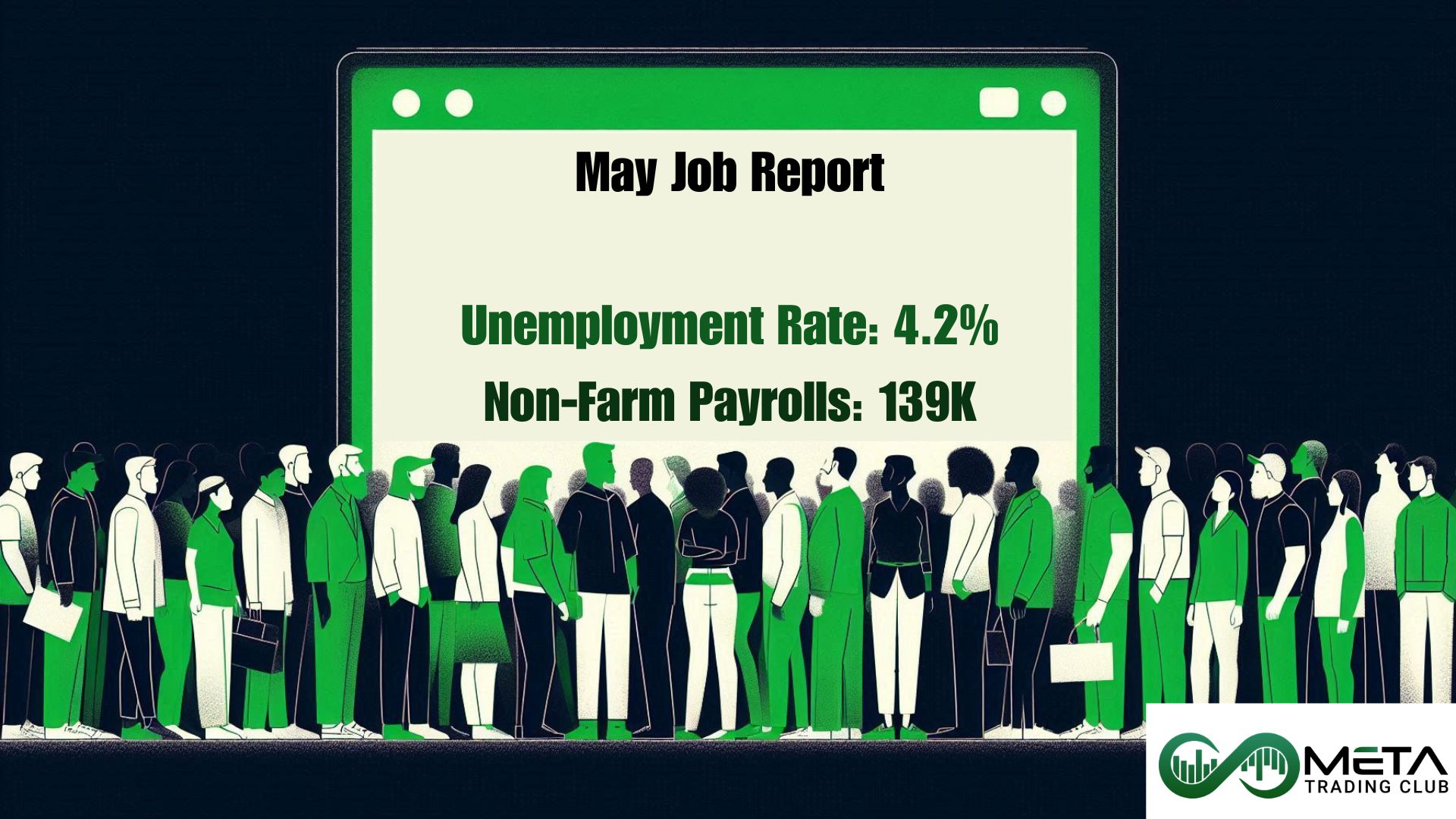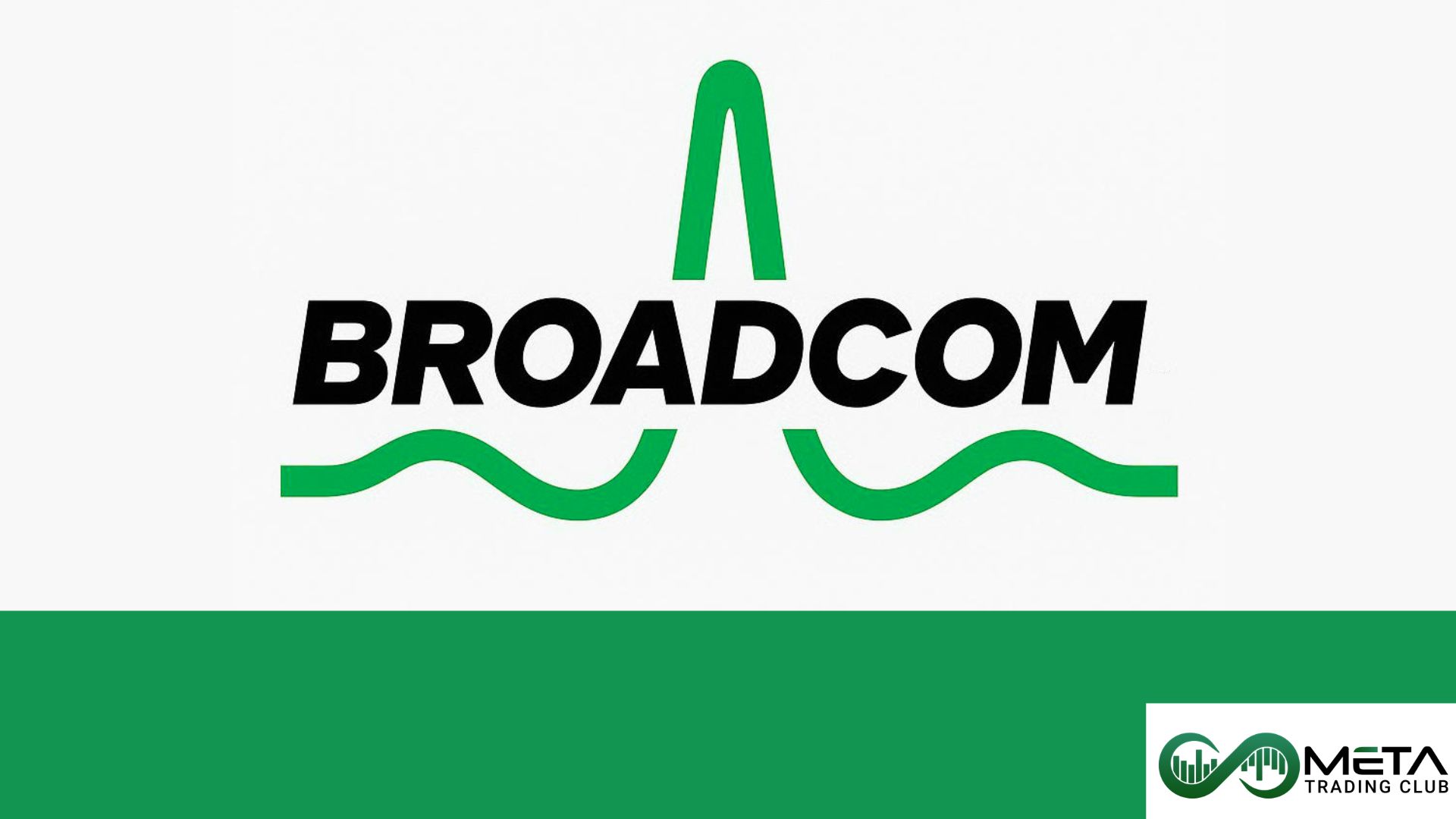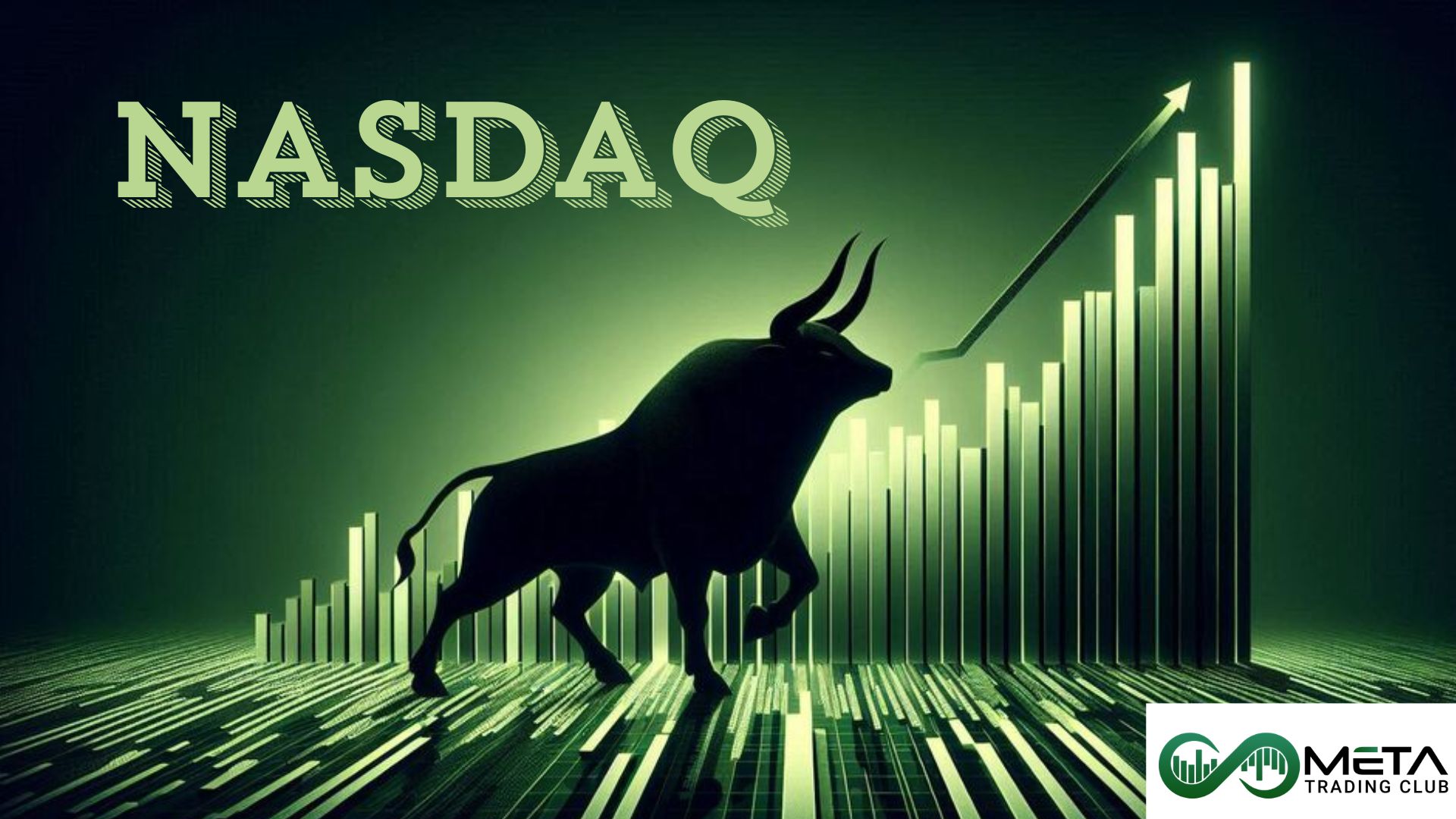Futures trading is a financial strategy that allows you to buy or sell a specific asset at a predetermined price at a specified time in the future. It’s a way to potentially profit from the price movements of commodities, stocks, and other assets. Are you new to futures trading? If you want to learn more about the futures contract, read our beginner’s guide to futures. Here we want to break down the complexities of futures trading and make it accessible for beginners to learn how to trade futures. You should read this article because it demystifies the complexities of futures trading, offering actionable insights for both beginners and seasoned traders.
Table of Contents
What Is a Futures Market?
Consider a trader named Alex who doesn’t grow wheat but wants to profit from price movements. Alex believes that weather conditions will impact wheat prices positively. Alex buys wheat futures contracts for delivery in December 2024 at the current futures price is $6.80 per bushel.
Alex hopes that the price will rise due to favorable weather conditions or increased demand. If the market price indeed rises above $6.80, Alex profits from the difference. However, if the price falls, Alex faces potential losses.
A futures market is an exchange where traders can buy and sell futures contracts. In typical futures contracts, one party agrees to buy a given quantity of securities or a commodity and take delivery on a certain date. The selling party agrees to provide it.
A futures market is an auction market in which participants buy and sell commodities and futures contracts for delivery on a specified future date. Futures are exchange-traded derivatives contracts that lock in future delivery of a commodity or security at a price set today.
Examples of futures markets are the New York Mercantile Exchange (NYMEX), the Chicago Mercantile Exchange (CME), the Chicago Board of Trade (CBoT) and the Minneapolis Grain Exchange.
How do Futures Contracts Work?
Futures contracts allow players to secure a specific price and protect against the possibility of wild price swings (up/down) ahead.
To illustrate how futures work, consider jet fuel: An airline company wanting to lock in jet fuel prices to avoid an unexpected increase could buy a futures contract agreeing to buy a set amount of jet fuel for delivery in the future at a specified price. Also, a fuel distributor may sell a futures contract to ensure it has a steady market for fuel and to protect against an unexpected decline in prices.
Both sides agree on specific terms: To buy (or sell) 1 million gallons of fuel, delivering it in 90 days, at a price of $3 per gallon.
In this example, both parties are hedgers, real companies that need to trade the underlying commodity because it’s the basis of their business. They use the futures market to manage their exposure to the risk of price changes.
But not everyone in the futures market wants to exchange a product in the future. These people are futures traders or speculators, who seek to make money off of price changes in the contract itself. If the price of jet fuel rises, the futures contract itself becomes more valuable, and the owner of that contract could sell it for more in the futures market. These types of traders can buy and sell the futures contract, with no intention of taking delivery of the underlying commodity. They’re just in the market to wager on price movements.
With speculators, traders, hedgers and other daily traders, there is a lively and relatively liquid market for these contracts.
How do futures exchanges work?
Exchanges provide a central forum for buyers and sellers to gather at first physically, now electronically. For the first 150 years or so, traders donned colorful jackets, stepped into tiered “pits” on the trading floors, and conducted business by shouting and gesturing, sometimes wildly. Today, so-called open outcry trading has largely been replaced by electronic trading.
Exchanges play another important role in guaranteeing futures contracts will be honored; many exchanges operate clearinghouses which serve as backstops or counterparties in every trade. The basic idea is to reduce or eliminate counterparty risk and ensure confidence in the markets.
Basics of Futures Trading
Before you start trading, it is important to learn about some basic expressions which are used in futures trading.
Long and Short
As with almost all derivatives, futures traders can make money when asset prices rise or fall.
Taking a long position involves purchasing a contract with the expectation that the underlying asset will rise from the spot price (this is the price for immediate settlement and delivery). If the price of the said asset has increased from the time of purchase to the date of expiry, the trader can sell the contract at a higher price and make a profit.
Going short, on the other hand, means selling a futures contract on the expectation that the underlying asset will decline from the current spot value. These bearish traders are essentially committing to sell the asset at the expiration date for its contract price. If the trader guesses correctly and the asset value falls, they can make money by buying the contract back at a cheaper price.
Cash Settlement and Rollovers
Futures contracts specify dates when the agreement expires and when physical delivery of the underlying asset is due. But in practice, the vast majority of traders have no intention of taking possession of the asset in question.
In fact, many futures contracts are designed so that physical delivery does not take place. Agreements instead are settled in cash, meaning that traders maintain their position until the final day and have the assurance of closing out their position at the expiration price.
The futures exchange will calculate the difference between the price at which the trader entered the contract and the final cash settlement price. If a person takes a long position, and the settlement price is greater than the entry price, they will receive a cash payment. Similarly, traders who initially went short and sold a futures contract will receive a payout if the settlement price is lower than their entry price.
In the event that the market moves in an adverse direction, the trader will have to pay the difference between the contract’s initial purchase price and the final settlement price. This will be deducted from their trading account.
You can also go down the roll over route if you decide not to take delivery of the underlying asset. This involves closing out a futures contract before it expires and simultaneously opening a new contract with a later expiration date.
Rolling over allows you to continue as normal with your speculative or hedging strategies.
Trading on Margin
One massive benefit of futures trading is that high levels of leverage are available. In fact, the use of borrowed cash is extremely common in the buying and selling of these contracts.
Traders need to put down an initial deposit, known as margin, if they wish to use leverage. This is essentially collateral that is deposited to cover potential losses and is usually a percentage of the total value of the position that a trader wishes to control.
The use of loaned money from a brokerage means that traders require less capital to get started. It also allows them to make more money by controlling a larger position than they would be able to if they used only their own funds.
However, traders need to be careful with using leverage, and especially those who are new to futures trading.
Leverages
Let me show you an example of how leverage works. Let’s say that Trader A believes that the WTI oil price benchmark will rise in value, and they wish to take advantage of this by trading futures contracts.
They opt to buy a WTI futures contract with a three-month expiration date on NYMEX. With a current oil price of $70 per barrel, and the contract representing 1,000 barrels of oil, the total value of the contract is $70,000.
Trader A also chooses a broker that offers leverage of 1:10, meaning that they must deposit an initial margin of $7,000 to carry out the trade.
Now let’s assume that the WTI price reaches $80 per barrel at the expiration date, an improvement of $10 from the entry price. The trader would have made a profit of $10,000 from that futures contract (the profit of $10 per barrel multiplied by the 1,000 barrels controlled by said contract).
Meanwhile, the return on their initial investment (in other words the margin) would stand at an impressive 143% (the $10,000 profit divided by that $7,000 initial deposit).
First Notice Day
A futures trading first notice day (FND) comes the day after a trader who has purchased a futures contract may be obliged to take physical delivery of the contract’s underlying commodity. The FND will vary depending on the contract and exchange rules.
Last Trading Day
The last trading day of oil futures, for example, is the final day that a futures contract may trade or be closed out prior to the delivery of the underlying asset or cash settlement. Usually, most futures result in a cash settlement, instead of a delivery of the physical commodity. This is because the majority of the market is hedging or speculating.
You will need to take into account unpredictable price fluctuations on the last trading day of crude oil futures, or natural gas futures, for example.
But before you start trading futures, you need to get to grips with your chosen asset, as the quantity of different futures varies.
How To Start Futures Trading?
Success in futures trading doesn’t come from luck; it comes from understanding the market and implementing sound trading strategies. Here are what you should prepare before starting your trade.
Mastering The Fundamentals
Futures contracts are more complex than many other financial instruments. And as I’ve also explained, the wide scale availability of leverage adds extra risk. For these reasons, new traders need to put in a lot of time and effort to find out how these securities work before they start trading.
But learning about futures themselves is just one part of the education process. To successfully trade these derivatives, one also needs to have a sound knowledge of what moves the prices of the underlying assets.
For instance, someone trading silver futures will need to understand how prices of this metal react to industrial production data, inflation, interest rate changes, supply-side news and US dollar movements, to name just a few influential factors.
Helpfully, there is wealth of information out there to help novice traders get in the swing of things and devise a trading strategy.
Using Technical
Having a strong awareness of technical analysis is also important for trading futures. This is essential for spotting trading opportunities as well as managing risk.
Charts can help traders forecast price movements, gauge market volatility, identify trends, and establish support and resistance levels, to name just a few of their many benefits.
Technical analysis is an excellent tool for all market participants. However, it is generally considered to be a more critical tool for day traders than for longer-term investors.
This is because these traders (like scalpers) are focused on exploiting small price movements within extremely tight timescales. Technical analysis allows them to identify short-term trends, patterns, and price fluctuations which in turn can help them make profitable trading decisions.
Opening Trading Account
Having completed these steps, the next stage is to select a brokerage with which to do business with. Fortunately there are plenty of companies out there that permit the trading of futures contracts, so traders have a good chance of finding a firm that can meet their needs.
Some of the key things to consider when deciding which brokerage to use include:
- Dealing costs: High commissions and fees, along with wide spreads, can seriously impact the profits futures traders make over time.
- Trading platform: Platforms that are easy to use, have fast execution times, and boast a variety of tools and functions can boost futures trading performance.
- Asset classes: Not all brokerages may offer the financial assets that a trader wishes to trade with futures contracts.
- Leverage and margin: Certain companies will allow traders to borrow more funds than others, while some also have stricter rules on margin maintenance.
- Customer support: Getting a technical or account problem sorted quickly and easily is critical, and especially for investors using futures day trading or scalping strategies.
- Demo accounts: Trading simulators are a great idea for new futures traders to perfect their craft before putting any money on the line.
- Regulation: Ensuring that the futures brokerage is regulated by a reputable financial authority will help protect a trader’s investments and ensure that their activities are above board.
Basic Futures Trading Strategies for Beginners
As a beginner, it’s essential to start with simple strategies and gradually expand your knowledge and experience. Here are some basic futures trading strategies:
- Trend Following: This strategy involves identifying and trading in the direction of the prevailing trend. For example, if the trend is upward, you would go long, and if it’s downward, you would go short.
- Mean Reversion: Mean reversion strategies seek to profit from the assumption that prices tend to revert to their historical averages. Traders look for overextended price moves and expect a reversal.
- Day Trading: Day traders open and close positions within the same trading session, aiming to profit from short-term price movements. This strategy requires quick decision-making and technical analysis skills.
- Swing Trading: Swing traders hold positions for several days to weeks, capitalizing on intermediate term price swings. Technical and fundamental analysis is often used to identify entry and exit points.
- Spread Trading: Spread trading involves simultaneously buying and selling related futures contracts to profit from the price difference between them. Common spreads include calendar spreads and inter-commodity spreads.
The Risks of Futures Trading: Margin and Leverage
Many speculators borrow a substantial amount of money to play the futures market because it’s the main way to magnify relatively small price movements to potentially create profits that justify the time and effort.
But borrowing money also increases risk: If markets move against you, and do so more dramatically than you expect, you could lose more money than you invested.
Leverage and margin rules are a lot more liberal in the futures and commodities world than they are for the securities trading world. A commodities broker may allow you to leverage 10:1 or even 20:1, depending on the contract, much higher than you could obtain in the stock world. The exchange sets the rules.
The greater the leverage, the greater the gains, but the greater the potential loss, as well: A 5% change in prices can cause a trader leveraged 10:1 to gain or lose 50 percent of her trade. This volatility means that speculators need the discipline to avoid overexposing themselves to any undue risk when investing in futures.
If such risk seems too much and you’re looking for a way to shake up your trade strategy.
Margin in Futures Trading
In the equity market, buying on margin means borrowing money from a broker to purchase stock effectively, a loan from the brokerage firm. Margin trading allows traders to buy more stock than they normally could.
Also, margin works similarly but is different in the futures market. When trading futures, a trader will put down a good faith deposit called the initial margin requirement. The initial margin requirement is also considered a performance bond, which ensures each party (buyer and seller) can meet their obligations of the futures contract. Initial margin requirements vary by product and market volatility and are typically a small percentage of the contract’s notional value. This type of leverage carries a high level of risk and is not suitable for all traders. Greater leverage can create much greater losses quickly and with small price movements of the underlying futures contract.
An individual or retail investor who wants to trade futures must typically open an account with a futures commission merchant. Then post the initial margin requirement, which, in turn, is held at the exchange’s clearinghouse.
As prices move against a futures trader’s position, that can produce a margin call, which means more funds must be added to the trader’s account. If the trader doesn’t supply sufficient funds in time, the trader’s futures position may be liquidated.
Your downside financial risk is not limited to the amount of equity in your account. Any or all of your positions may be liquidated at any time if your account equity drops below required margin levels.
Risk Management in Futures Trading
Risk management is paramount in futures trading to protect your capital and minimize potential losses. Here are some essential risk management techniques for beginners:
- Position Sizing: Determine how much capital to allocate to each trade based on your risk tolerance and account size. Avoid overleveraging.
- Stop Loss Orders: Use stop loss orders to set predefined exit points for your trades. This helps limit losses and prevents emotional decision-making.
- Diversification: Spread your trading capital across different assets or contracts to reduce concentration risk.
- Risk–Reward Ratio: Calculate and maintain a favorable risk-reward ratio for each trade. Aim for a ratio that offers the potential for greater profits than losses.
- Continuous Learning: Stay informed about market news, events, and economic indicators that can impact your trades. Ongoing education is crucial in futures trading. In order to enhance your knowledge, you can watch our free lesson here.
- Use of Options: Use option contracts to protect your open futures contracts.
Futures trading is a complex but rewarding endeavor for beginners willing to invest time and effort in learning the ropes. While this guide provides a solid foundation, it’s important to remember that successful futures trading requires continuous learning, discipline, and a commitment to risk management. As you gain experience, you can explore more advanced strategies and delve deeper into the world of futures trading.
How to Trade Futures?
Trading futures can be an exciting way to participate in global financial markets. Here’s a step-by-step guide for beginners:
Learn the basics: Familiarize yourself with the basic concepts and terminology related to futures trading. Understand what futures contracts are, how they work, and their purpose.
Choose Your Strategy: Decide whether you want to speculate on price movements or hedge existing positions. Speculation involves betting on price direction, while hedging aims to protect against adverse price movements.
Identify Opportunities: Research and analyze potential trading opportunities. Consider factors like market trends, economic indicators, and news events that may impact the asset you’re interested in.
Select a Contract and Month: Futures contracts have specific expiration dates. Choose the contract that aligns with your trading timeframe and the asset you want to trade. For example, if you’re interested in stock index futures, look at contracts like the S&P 500 E-Mini or Nasdaq-100 E-Mini2.
Understand Account Funding: Learn how margin works in your trading account. Futures trading involves leverage, which means you can control a larger position with a smaller amount of capital. However, be cautious not to become overleveraged.
Place Your Order: Use a reliable futures trading platform to execute your trade. Look for platforms that offer intuitive interfaces, multiple order types, and competitive fees. Then place your order and start your future trade.
Monitor and Manage Your Trade: Once your trade is live, keep an eye on market developments. Set stop-loss orders to limit potential losses and consider adjusting your position as needed.
Conclusion
Futures trading can be a great way for traders to potentially make a profit by predicting future price movements in various markets. However, it is important to understand the basics of trading futures, the risks involved, and how to choose a reputable broker before getting started.
With the right knowledge and tools, beginners can navigate the world of futures trading successfully. This guide has provided a comprehensive introduction to the basics of trading futures for beginners. Also, for learning how to trade, you could participate in MTC Incubator.
By understanding the concept of futures contracts, the different types of contracts available, and the mechanics of how futures trading works, beginners can gain a solid foundation for making informed decisions in the market.
Additionally, by being aware of the risks and utilizing the right tools and resources, beginners can minimize the potential for mistakes and maximize their chances of success in trading futures.
FAQ
- How to trade futures?
Learn the basics of futures and choose your strategy. Then identify potential trading opportunities and select a contract and month that you want to trade. At least choose a broker and open your account, place your order and manage your trade. - Is future trading good for beginners?
Futures trading can be both exciting and challenging for beginners. Also, it’s essential to approach it with caution, education and a clear risk management plan. - Is future trading profitable?
Futures can be profitable if you approach them strategically and manage risk effectively. Futures allow you to control a larger position with a smaller amount of capital due to leverage. If your trade goes in your favor, the returns can be substantial. - Are futures hard to trade?
Trading futures successfully requires your undivided attention to read and evaluate the markets effectively. It’s not easy but you should stay informed about market news, events, and economic indicators that can impact your trades. Be aware that ongoing education is crucial in futures trading. - Can you make money trading futures?
Making money trading futures is possible, but it requires knowledge, discipline, and risk management. Futures allow you to speculate on price movements in various asset classes (commodities, currencies, stock indexes). If your analysis is accurate, you can profit from both rising and falling prices.

